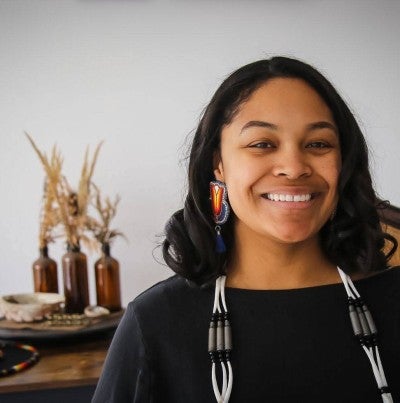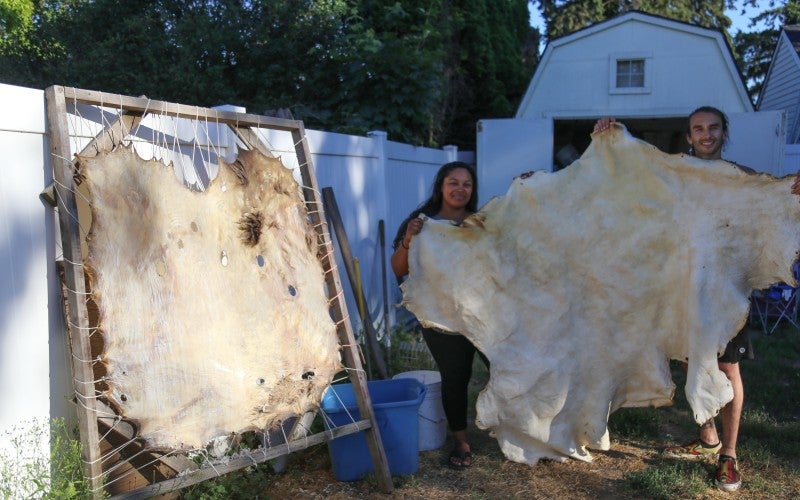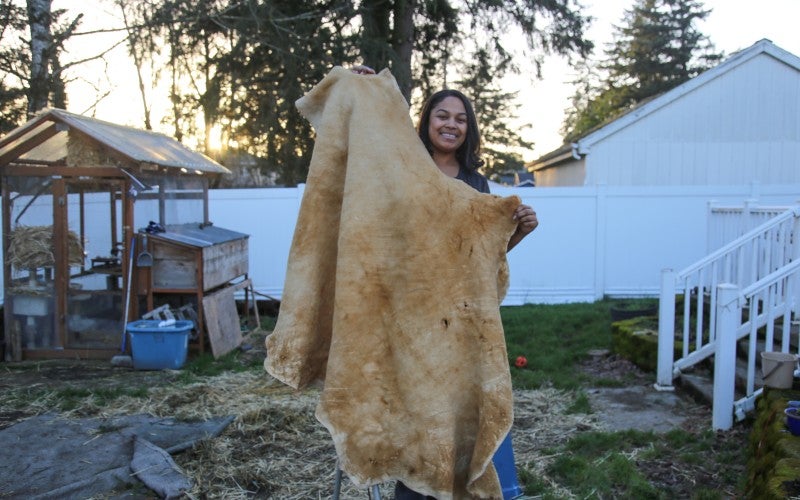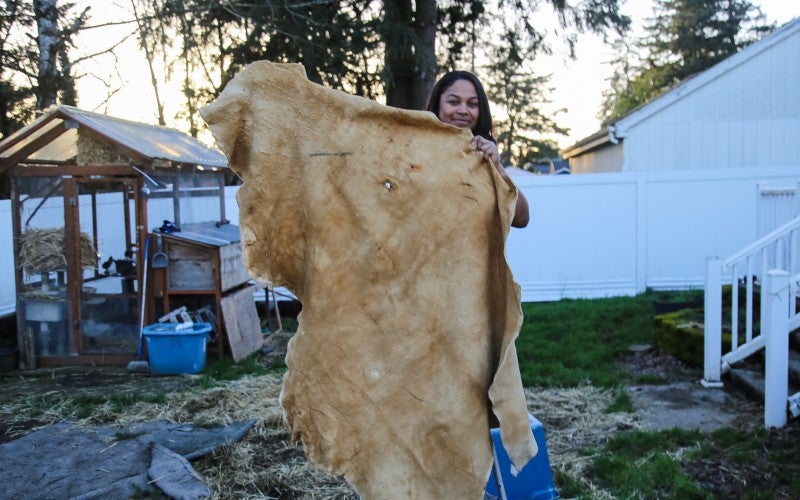Eleeziaa Howard (Portland, OR) makes moccasins that reflect the cultural heritage of her ancestral community, the Confederated Tribes of Siletz Indians. Her moccasins are a “round top” style; she makes each one from a single piece of leather and then beads them in red, black, and turquoise, colors that she says are typical of northwest tribes. Howard learned this artform from her cousin, and has begun to share her skills with others, both online as well as in person and at Siletz culture camps.
Bio
Eleeziaa Howard makes deer hide moccasins that reflect the cultural heritage of her ancestral community, the Confederated Tribes of Siletz Indians. She grew up attending Siletz culture camps, where she participated in traditions like the brain tanning of deer hides. “They use a mixture of water and deer brains, and they slosh it on the hide as they scrape it,” she explains. Something about the process resonated with her, and she remembers it as “the one thing I wanted to do.” Much later, after the birth of her first child, Howard’s cousin taught her how to make a pair of child-size moccasins. Before long, Howard was assisting her cousin at culture camp, which led eventually to her own moccasin-making workshops and online tutorials. “There’s no instructional manual, no pattern,” she explains. “It’s really just passing down the knowledge.” Howard’s moccasins are a “round top” style; she makes each one made from a single piece of leather and then beads them in red, black, and turquoise, colors that she says are typical of northwest tribes. She also includes other hues derived from regional plants. Howard augments what she learned from her cousin with additional traditional skills, such as beadwork and traditional stitching, which she learned online. Occasionally, she’ll make a particularly deluxe pair of moccasins like the high-top boots with added soles, rabbit fur lining, and beaded edges. For Eleeziaa Howard, the goal of this work is to encourage others to pick up moccasin-making. “I’m hoping this can inspire more people to make their own footwear,” she says. “I think it’s an artform that’s being lost.”







